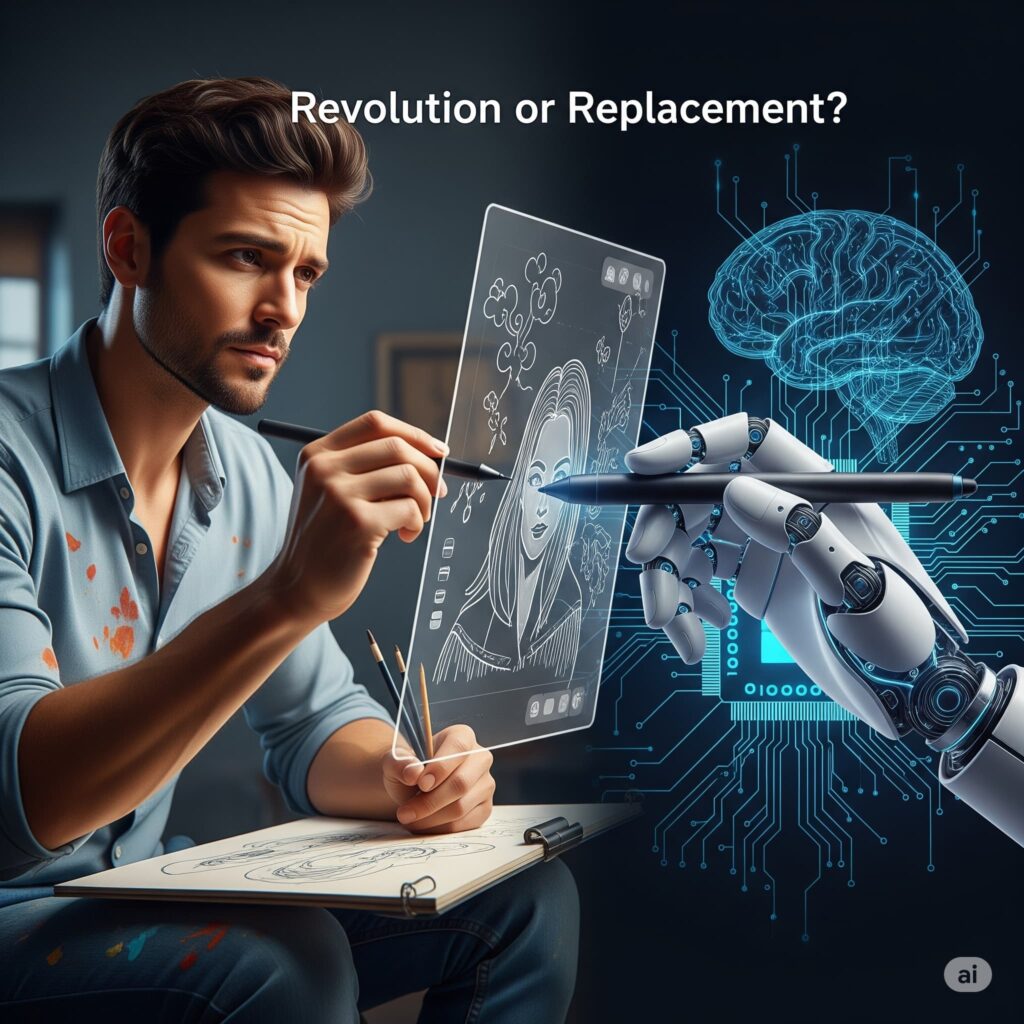
The rise of generative AI is sparking a whirlwind of debate. Is this groundbreaking technology poised to revolutionize content creation, boosting productivity and unleashing human creativity? Or is it a looming threat, poised to automate us out of our jobs? The truth, as with most technological advancements, lies somewhere in between. This article explores the multifaceted impact of generative AI on content creation and the future of work.
Understanding Generative AI
Generative AI refers to a class of artificial intelligence algorithms capable of generating new content, ranging from text and images to audio and video. Unlike traditional AI, which focuses on analyzing existing data, generative AI learns patterns from input data and then uses this knowledge to create something entirely new. This is achieved through sophisticated techniques like deep learning and neural networks, allowing these models to mimic human creativity in surprising ways.
Examples of generative AI tools include:
- GPT-3 and its successors (like GPT-4): These large language models can generate human-quality text for various purposes, from writing emails and articles to creating code.
- DALL-E 2 and Midjourney: These AI image generators produce stunning visuals from text prompts, opening up exciting possibilities for graphic design and art.
- Jukebox and Amper Music: These tools generate original music compositions in various styles.
The Potential Benefits of Generative AI in Content Creation
Generative AI offers numerous advantages for content creators:
- Increased Efficiency: AI tools can automate repetitive tasks, such as generating basic outlines, writing initial drafts, or creating social media posts, freeing up human creators to focus on higher-level tasks like strategy, editing, and refining the creative vision.
- Enhanced Creativity: AI can act as a powerful brainstorming partner, providing fresh ideas and perspectives that might not have occurred to a human creator. It can also help overcome creative blocks and explore unconventional approaches.
- Accessibility: Generative AI tools can empower individuals with limited writing or design skills to create professional-quality content, making content creation more accessible to a wider audience.
- Personalized Content: AI can be used to tailor content to specific audiences, ensuring that messages resonate effectively with different demographics and interests.
- Multilingual Content Creation: AI can translate and generate content in multiple languages, breaking down communication barriers and expanding reach.
The Concerns and Challenges
While the potential benefits are significant, the rise of generative AI also raises legitimate concerns:
- Job Displacement: The automation potential of generative AI understandably leads to anxieties about job displacement in fields like writing, graphic design, and music composition. While complete replacement is unlikely in the near future, certain roles might be significantly impacted.
- Copyright and Intellectual Property: The legal landscape surrounding AI-generated content is still evolving. Questions around copyright ownership and the potential for plagiarism need to be addressed.
- Bias and Ethical Considerations: AI models are trained on existing data, which can reflect societal biases. This can lead to AI-generated content perpetuating harmful stereotypes or discriminatory practices. Ensuring fairness and mitigating bias is crucial.
- Lack of Originality and Creativity: While AI can generate impressive content, some argue that it lacks the genuine originality and emotional depth that comes from human creativity. The concern is that over-reliance on AI could lead to a homogenization of content.
- Misinformation and Deepfakes: The ease with which generative AI can create realistic but false content raises concerns about the spread of misinformation and the potential for malicious use, such as creating deepfakes.
The Future of Content Creation: Collaboration, Not Replacement
The key takeaway is that generative AI is not about replacing human creators; it’s about augmenting their capabilities. The future of content creation is likely to involve a collaborative relationship between humans and AI, where AI handles the more routine tasks, allowing humans to focus on the creative and strategic aspects.
This collaboration will require:
- Upskilling and Reskilling: Content creators will need to adapt and acquire new skills to work effectively with AI tools. This includes learning how to use AI to enhance their workflow, critically evaluate AI-generated content, and focus on tasks that require human ingenuity and emotional intelligence.
- Developing Ethical Guidelines and Regulations: Clear guidelines and regulations are needed to address copyright issues, mitigate bias, and prevent the misuse of generative AI.
- Promoting Media Literacy: Individuals need to develop critical thinking skills to discern AI-generated content from human-created content and to identify potential biases or misinformation.
Generative AI is a transformative technology with the potential to revolutionize content creation. However, its impact will depend on how we choose to integrate it into our workflows and society. By embracing a collaborative approach, addressing ethical concerns, and investing in education and regulation, we can harness the power of generative AI to enhance human creativity and productivity while mitigating potential risks. The future of content creation is not about humans versus AI, but humans with AI.